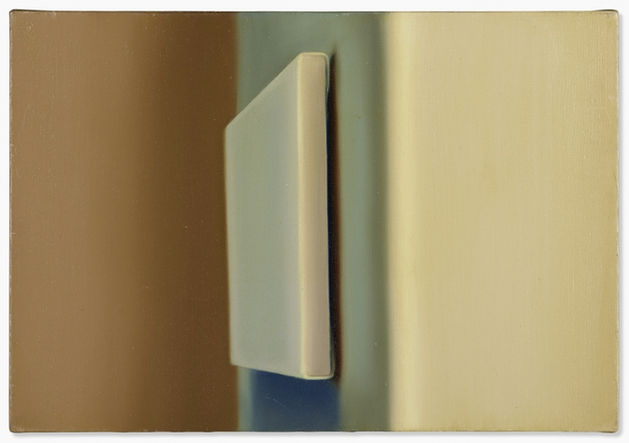MiniMax
Minimalist Themes in a Maximalist Collection
September 13 – October 20, 2012
MinMax
Minimalist Themes in a Maximalist Collection
September 13 – October 20, 2012
Opening Reception: Thursday, Sept. 13, 6–8 pm
Minimal, Geometric and Reductive works from the Allan Stone Collection
Allan Stone Gallery is pleased to present MinMax: Minimalist Themes in a Maximalist Collection, September 13-October 20, 2012, part of an ongoing series of exhibitions investigating the late Allan Stone’s wide range of interests as a dealer and collector.
As reflected in his long association with Abstract Expressionism, Allan Stone was best known as a proponent of gestural bravado and material gravitas. This exhibition reveals a less familiar side of his taste: artists working in minimal, reductive and geometric themes. Though Stone often referred to himself as a “maximalist,” he also demonstrated an eye for elemental statements, having shown artists like Barnett Newman, Robert Ryman and Eva Hesse as early as 1962. This exhibition includes artists currently represented by the gallery as well as artists from the gallery’s 50-year history.
Tadaaki Kuwayama, Jay Rosenblum, John Vickery and Charmion von Wiegand address variations on geometric painting, with hard-edged striping, segmenting and dividing of the picture plane. George Deem’s unusually spare striped canvas, like a blank sheet of lined notebook paper, is more about the absence of text than his better known “writing-as-imagery” works. Edward Renouf’s paintings address geometry in shaped canvases: a circle, a triangle and a rectangle, each a plane of dark black etched through with minute rhythmic scribbles to reveal the silver painted ground beneath.
Engaged with subdividing the picture plane on slightly looser terms are Richard Diebenkorn’s airy line-work etching, Alfred Leslie’s collage in black and white torn and stapled paper, and Philip Sultz’s tiny panels of heavily impastoed semi-rectangular patches of paint. Kazuko Inoue has produced variations on thickly painted, subdivided rectangles and squares for over thirty years. Two works on paper from the Seventies represent Inoue’s early use of dots and dabs of paint arranged in an irregular grid, while a recent canvas employs dark tones and repetitive layering to convert otherwise dispassionate squares into an object of contemplation and transcendence. Stewart Paley Stewart Paley describes fields of geometric shapes hovering in ambiguous spaces with vibrant, flowing and atmospheric watercolor.
The largest work in the show is Jack Whitten’s nine foot wide painting from 1976, an enveloping gray and white striped span of “combed” paint incised by repeatedly dragging afro combs across the surface. Stone gave Whitten his first New York exhibition in 1968 and remained his friend, supporter and patron into the early 1990s. This painting, directly related to a similar work in the Museum of Modern Art’s permanent collection, epitomizes Whitten’s meditations on materiality and process.
Three of the artists build their minimal statements around real world objects. Dan Basen has created monochromatic grids of color on paper on which he has collaged a single matchstick in each box. Betty Parsons, the famed art dealer who was also an artist, painted her striped abstraction on staggered blocks of found wood. The only representational painting in the show is an ethereal photorealist piece by Lisa Parker Hyatt portraying a blank canvas hanging on a blank wall. Derrick Guild, who usually makes highly detailed paintings of surreal still lifes emerging from dark spaces, joins the group with one of the few objects in the show: a porcelain wall sculpture of a perfectly cast blank canvas.
While most of these artists espouse a concern for the “object-ness” of images, in the strictest sense Bruce Pollock is the only sculptor in this exhibition. His five colorful, abraded-paint-on-wood works describe elemental architectural forms, like small Playskool® models of utopian skyscrapers and idealized barns.
***
Allan Stone Gallery opened in 1960 showing works by Willem de Kooning, Cesar, Joseph Cornell, Barnett Newman, and a host of then-emerging artists like Andy Warhol, Wayne Thiebaud, Richard Estes, Robert Ryman, Eva Hesse, and John Chamberlain. The gallery, at its new location at 5 East 82nd Street, New York City, continues to present contemporary and mid-career art, interspersed with thematic exhibitions from the Allan Stone Collection, while maintaining a tradition of expertise in the mid-century New York School.




















